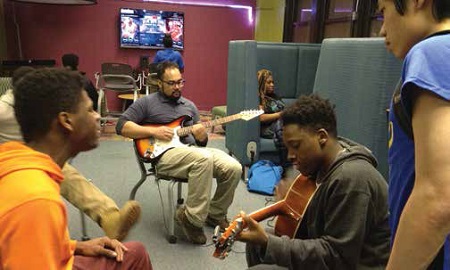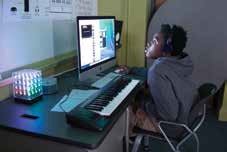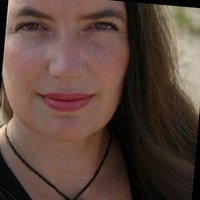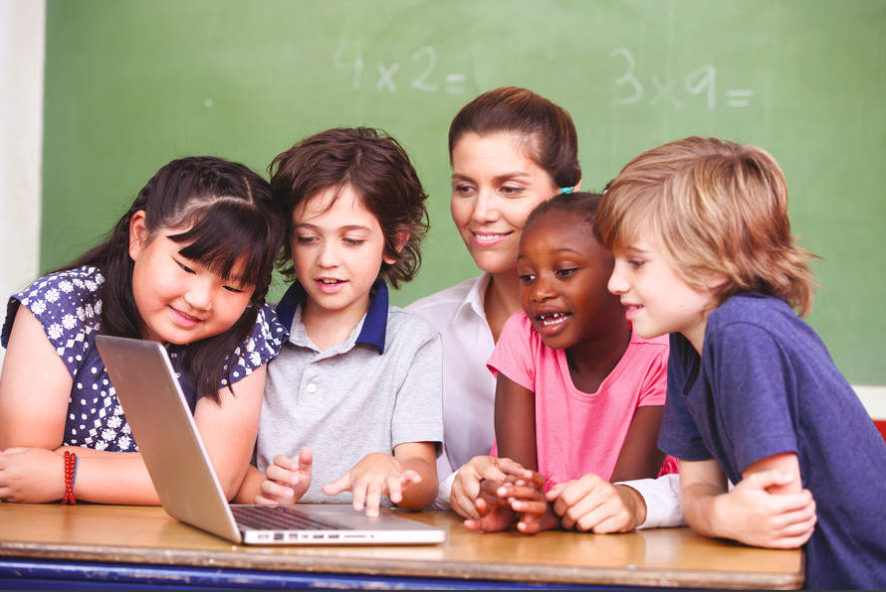LEARNING OUTSIDE THE BOX: CREATIVE LEARNING SPACES

Don LaBonte, co-director of Convergence Academies—a three-year initiative through the Department of Education to test theories around connected learning to enhance curriculum—chats about the benefits of creative learning spaces.
Larry, a student at Tilden High School, edits music in the Digital Atelier, an in-school, student-centered makerspace built in partnership with Bretford furniture. He committed to making a beat a day in order to master the skill.What do you feel is the biggest benefit of establishing a creative learning space?
The concept of choice. Give youth the freedom to direct their own learning, pick their own paths, with an educational mentor present to guide them. Currently classrooms are set up for students to undertake rote memorization, complete a series of repetitive acts, then move on to the next set. Our society needs more—we need to help develop critical thinkers and people who can walk into situations and work through their options creatively to find the best possible solutions.
Classrooms have followed largely the same configuration for a very long time—why change?
Classrooms are set up so the teacher, on a stage, can regurgitate content from a book—expecting students to absorb, digest, and regurgitate it to prove they have received it. When you get into creative learning spaces, those paths haven’t been laid out and kids have opportunities to express themselves in a variety of ways. We all learn differently and express ourselves differently. Having a space where you can get on a computer and journal or create a stop-motion movie to demonstrate your understanding of the material—it’s another way to reach the same end result and demonstrate that yes, you are gaining knowledge.
Do you find unique learning spaces to be a distraction to students’ learning?
Creative learning spaces are often messy and loud and they look different from what we think of as a “successful” formal classroom, where everyone is working silently and independently on identical sheets of paper—but that doesn’t mean learning isn’t happening.
Tools and ideas to transform education. Sign up below.
Digital media mentor Luke Sequeira strums guitar with a small group of Tilden High School students in Convergence Academies' Digital Atelier makerspace to share the enjoyments of tactile performance not always present with digital media production.How do reluctant learners respond to this type of change in environment?

From our observations, kids come to school because they have something to look forward to. If you are in school, then you are learning, and grades go up. Kids who are allowed to pursue their passions begin to see school as a resource to accomplish what they want to accomplish, rather than something that takes up their time and gets in their way.
Budgets are tight, so how can teachers who don’t have the financial resources benefit from the concept without remodeling their classrooms?
Experiment to find an engaging environment. Create a shift in the room, changing the focal points where instruction happens. Go outside if a lesson lends itself to that. Unfortunately, teachers need to be empowered to make those shifts. They often feel intimidated and unwilling to be the first ones to take that step. There is a comfort in the four walls of a formal structure, surrounded by order, but we need to push through that as educators to benefit our students.
Where do you see the future of learning spaces heading? Will this concept become more widespread?
How we do things now isn’t the way the world works. There needs to be a compromise in our thinking. It’s a very mixed message. We want kids to walk down the hall all perfectly lined up, very ordered and regimented, and sit up straight at their desks in a row . . . and then we ask them to think outside the box. And they can’t do it. They haven’t been given permission. They haven’t been let out of the box.
Sascha has nearly two decades of experience as a freelance journalist writing for national magazines, including The Washington Post, LA Times, Christian Science Monitor, National Geographic Traveler, and others. She writes about education, travel and culinary topics.

